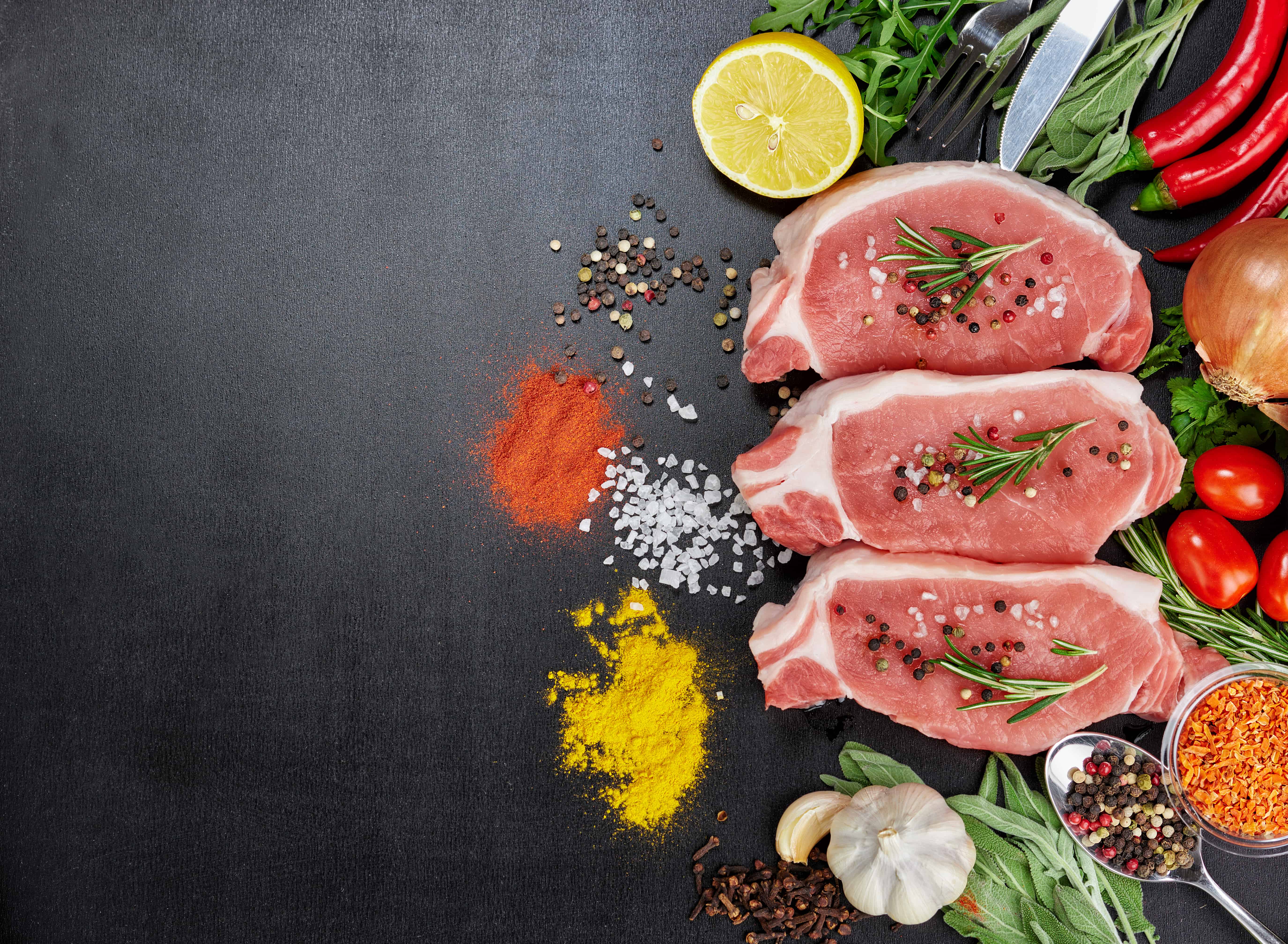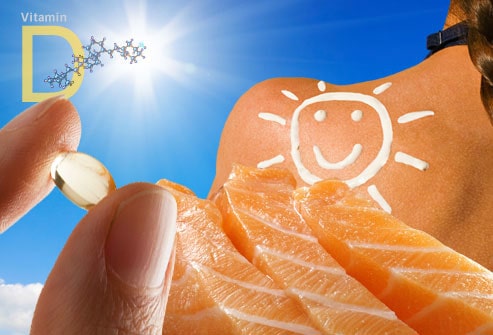The (Partial) Vindication Of Soy Protein
Not more than a month ago, I was standing in a field of soy beans in Peoria Illinois doing a commercial for a Japanese film crew. The guy to the right of the camera was holding up my little cue card as I said “Soy products have been shown to reduce cholesterol and possibly prevent cancer, yada, yada, yada…” I found it hard to keep a straight face and say nice things about soy protein as I have always considered soy protein basically a waste of time for bodybuilders. However, this commercial was for “normal” people so I did not feel like a “sell-out” for saying positive things about soy protein. On the plane ride home, with a glass of red wine firmly in hand, I decided to take a closer look into the properties of soy proteins and see if there were not some useful applications of this protein for bodybuilders after all.
The bodybuilding community has been pretty hard on soy protein generally relegating it to “crap” status among most bodybuilders and bodybuilding nutritionists. I will be the first to admit I have helped the negative reputation of soy among bodybuilders along by telling them how inferior it is to such proteins as whey or egg in various articles and my book. I still think soy protein is inferior to such proteins as whey and egg, but I do believe that it has some potentially useful applications if used correctly and tweaked just right. More on that later.
The Downside of Soy
So why does soy have such a bad reputation among bodybuilders? On the surface, it would appear that soy protein is pretty lousy stuff for most athletes. Soy protein has a low BV score of 74. What does that mean? There are several ways of assessing protein quality. You have the protein efficiency ratio (PER), the net protein utilization (NPU) and the biological value (BV). The PER is an outdated measure of protein quality and is not used much anymore by most supplement manufacturers or nutritionists “in the know” about protein quality. The NPU is a little better than the PER, but fails to take several important factors into account involved with proteins, such as absorption and digestibility, so it too is not used much either. That brings us to the BV. The BV is the most accurate indicator of biological activity of a protein and measures the actual amount of protein deposited per gram of protein absorbed. As a rule, high BV proteins are better for nitrogen retention, immunity, IGF-1 stimulation, and are superior for reducing lean tissue loss during various wasting states than their low BV counterparts. That is, as a general rule, high BV proteins are more anti-catabolic than low BV proteins. As most people already know, the highest BV protein available is whey protein with whole egg a close second (see chart), which is why bodybuilders and other athletes rely heavily on these two protein foods and tend to avoid soy and other proteins with low BV scores.
In addition to its low BV score, soy has several other nutritional drawbacks that make bodybuilders avoid the stuff like it was fake D-bol. One reason soy is so low on the BV scale is it is lacking in the sulfur containing amino acid methionine. The sulfur containing amino acids (cysteine being the other one) are particularly important for protein synthesis/growth, proper immune system function, and the body’s production of glutathione (GSH). GSH is one of the most important anti-oxidants found in the body and protects cells and serves to detoxify a variety of harmful compounds such as hydrogen peroxide, carcinogens, reactive oxygen species, and many others. In particular, GSH is also partly responsible for keeping low density lipoproteins (LDL) from oxidizing and clogging our arteries. Several studies have shown soy protein to be inferior to whey for the production of GSH and improvements in immunity. Though soy has a reputation for reducing cholesterol in man and animals, in one study rats fed soy protein that was not fortified with methionine as 13% of total calories, had an increase in cholesterol and an increase susceptibility of LDL cholesterol to peroxidation . So not only did the rats cholesterol go up, the LDL fraction oxidized easier potentially leading to clogged arteries. It is well established that an increased susceptibility of LDL to peroxidation is an essential step for the development of atherogenesis. These rats were found to have low levels of GSH and did not grow as well as another groups of rats fed casein.
If that were not bad enough to convince you to avoid soy, it gets worse. Soy protein contains something known as “anti -nutrients” that block the digestion and absorption of many nutrients. Two of the more important anti-nutrients found in soy are Lectins and protease inhibitors. Lectins are nasty constituents of various plants and can cause all sorts of problems from interfering with the absorption of important nutrients to intestinal damage. Proteases are enzymes that assist in the digestion of proteins. Soy has several protease inhibitors that interfere with the enzyme trypsin and chymotrypsin, both of which are important for the digestion and absorption of proteins in the gastrointestinal tract. Finally, soy is rich in estrogenic compounds such as genistein and diadzein. There are over 300 plant derived phytoestrogens found that vary substantially in their physiologic effect and potency in animals and man. As any bodybuilder worth his weight belt already knows, a change in the testosterone/estrogen ratio in favor of estrogen can lead to increased bodyfat and other ill effects as it relates to the strength athletes goals.
BV of common proteins
* Whey=104
* Whole egg=100
* Egg white=88
* Casein=77
* Soy=74
The Upside of Soy
“You mean there could possibly be an upside?” you are thinking. I realize the previous section does not paint a very pretty picture of soy proteins, but I did not give you the entire story. As I said, on the surface soy looks like a pretty miserable protein for the hard training bodybuilder trying to eke out some new muscle tissue and/or lose bodyfat. The problem of the anti- nutrients found in soy protein has been taken care of as the manufacturers of high quality soy protein isolates remove them or dramatically reduce their activity during processing, so this is not a big point of concern anymore. Also, the addition of methionine to soy isolates greatly improves its BV and nutritional value, though it still does not reach the BV of whole egg or a good whey protein for that matter. Rats fed soy protein enriched with methionine grew at a similar rate as those fed casein.
As for the estrogenic compounds found in soy, that’s a bit more complicated. For years, soy protein has been found to reduce cholesterol in a wide range of animalsspecies and man. One recent study found that when they separated the estrogenic compounds from soy, it failed to have the usual cholesterol lowering effects. This does not come as a big surprise as the cholesterol lowering protective effects of estrogen are well known. However, soy protein appears to have several mechanisms by which it lowers cholesterol (i.e. isoflavones, endocrine effects, fiber, saponins, etc.) and its mechanism on cholesterol probably depends on the animal species being studied. In addition to soy proteins ability to reduce cholesterol, epidemiological research also suggests soy can reduce certain forms of cancer and longevity companies such as the Life Extension Foundation are now recommending soy protein isolate for the treatment of certain cancers.
Ok, now here is where things start to get interesting as it applies the bodybuilders. Though soy proteins contain these estrogenic compounds, it appears that they are “tissue specific.” One study that used Rhesus monkeys found that soy proteins had no effects on the reproductive hormones of these animals. Testosterone, DHEAS, sex hormone binding globulin (SHBG), testicular weight, prostatic weight, and other measurements were taken. They found no difference between male animals who ate soy protein that contained the plant estrogens and those who ate soy with the estrogens removed, leading researchers to conclude: “thus, the isoflavones (genistein and diadzein) in soy protein improve cardiovascular risk factors without apparent deleterious effects on the reproductive system…, ” and “Genistein’s effects appear to be tissue specific, with estrogen agonist effects on plasma lipid concentrations, plasma lipoprotein distributions and preservation of bone mass that are similar in magnitude to mammalian estrogens, but without estrogenic effects…” They finally conclude “Our data support an interpretation that soy beans estrogens have tissue specificity in part because of their mixed estrogen agonist and antagonist properties.” From this and other data, it seems the phyto estrogens in soy can lower cholesterol and improve heart disease risk without systemic estrogenic effects (i.e. gyno, bodyfat increases, etc.) that would normally be seen if say a bodybuilder took estrogen pills or from the conversion of certain steroids to estrogen. This study is a little more relevant to us humans being it was done with male monkeys which are far more similar animals to people than rats. However, I think that an upper level of soy protein that contains phyto estrogens could cause systemic estrogenic effects if enough were taken, but that’s only speculation on my part. Also, the use of soy isolates by men might be better cycled rather than taken all the time being we are not 100% sure at this time about the long term estrogenic potential of soy proteins in athletes. The ability of soy protein to lower cholesterol without other estrogenic effects could be useful to bodybuilders using anabolic steroids who tend to see a rise in cholesterol and/or LDL.
Now I have saved the best part for last regarding the upside of soy proteins. Soy protein has been found to raise thyroid output in a wide range of animals from rats to rabbits and pigs. Studies done with human subjects have been harder to quantify (what else is new?), but several studies suggest an effect on thyroid hormones in people eating soy protein isolate. Soy protein has been shown to raise thyroid hormone output which could be a real advantage to bodybuilders trying to shed some fat. The intake of various high quality proteins has been associated with higher levels of thyroid hormone, but soy appears to have thyroid hormone raising abilities unique to that of other proteins. Though some research has shown changes in T3 and thyroid stimulating hormone (TSH), the real effect appears to be with T4 which is elevated consistently in the studies done using animals-and to a lesser degree people-eating soy proteins. Also, some studies have found changes in the insulin/glucagon ratio that would favor reductions in cholesterol and possibly bodyfat. At this time, exactly how soy proteins have this effect on thyroid output is not well understood, but their working on it.
So what does the above information mean to the bodybuilder? There are two points I think are the most relevant to strength athletes. (1) Though thyroid hormones are considered catabolic hormones, they are actually more catabolic to fat and carbohydrates, but stimulate protein synthesis if adequate calories are eaten and the amounts of thyroid hormones are not to high. This could be useful for increasing protein synthesis and reducing bodyfat. More research needs to be done in this area of course. (2) When a person diets the success of that diet is quickly brought to a screeching halt when the body figures out what you are up to and reduces the output of thyroid hormones. This is a reaction by the body brought on by a reduced caloric intake which reduces metabolic rate and a new caloric set point is established and the dieter is now screwed! The use of soy protein isolate to boost thyroid output could be exactly what the doctor ordered to keep thyroid levels raised during reduced calorie intake when dieting if the above evidence with soy proteins and thyroid function holds true in humans on reduced calories diets. Lets hope it does!
Solving The Soy Dilemma
Taking all of the above information on soy protein that we have looked at in this article I think we come up with something of a dilemma for the bodybuilder. For the average person, there is no real dilemma here as they don’t care much about protein quality. Unfortunately, if a bodybuilder starts to replace too much of the other high quality proteins in their diet in favor of soy to reap some of the potential benefits of soy, than he (or she) runs the risk of losing muscle due to this lower quality protein. This would be particularly noticeable during a reduction in calories (i.e.dieting). The lower the calorie intake the higher the quality of protein needs to be to maintain lean body mass. Make no mistake about it, soy protein does not have the nitrogen retaining, anti catabolic, muscle building abilities of proteins such as whey, whole egg, red meat, etc. However, soy does appear to have some other real benefits to the bodybuilder. So what do we do? So far, it appears that a person does not need to eat a great deal of soy protein isolate to get the benefits. Estimates of ten – thirty grams a day of a high quality soy protein isolate should do the trick for most people.
This is how I solve the dilemma and I have found this strategy works well for people. By mixing a high quality whey protein powder with a high quality soy isolate in a 2:1 ratio and eating that two – three times a day, the bodybuilder can have the best of all possible worlds (as it relates to the high BV, immune enhancing, nitrogen retaining abilities of the whey and the cholesterol lowering/thyroid stimulating abilities of the soy). To date, I have no reason to believe that mixing these two proteins will negate or interfere with the benefits or properties of either protein, but there is scant research in this area with healthy athletes. Anecdotally, the people I have told to do this mixture have given me mostly positive feedback so far.
Plain and simple, mix in a blender two scoops of whey protein to one scoop of high quality soy protein isolate and take the mixture two-three times per day. In fact, I think with a few other key ingredients, this could make a real nice pre mixed meal replacement product for use when dieting. For now however, you can make it yourself and you might be surprised at the results…
References
Forsythe, W. A., Soy Protein, Thyroid Regulation and Cholesterol Metabolism. J. of Nutri. (review), 125 (3 suppl): 619S-623S, 1995.
Anthony, A.S, et al, Soybean Isoflavones Improve Cardiovascular Risk Factors Without Affecting the reproductive System of Peripubertal Rhesus Monkeys. J. of Nutri., 125: 43-49, 1995.
Hosokawa, Y., et al, Hepatic Cysteine dioxygenase Activity and Sulfur Amino Acid Metabolism In Rats: Possible Indicators In the Evaluation Of Protein Quality. J. of Nutri. 118: 456-461, 1988.
Hajos, G., et al, Effects of Proteolytic Modification and Methionine Enrichment On the Nutritional Value of Soya Albumins For
Rats. Nutri. Biochem. 7:481-487, 1996.otoh, N., Inhibition of Glutathione Synthesis Increases The Toxicity of Low Density Lipoprotein To Human Monocytes and Macrophages. J. Biochem. 296:151-154, 1993.
Potter, M. S., Overview of Proposed Mechanisms For the Hypocholesterolemic Effect of Soy. J. Nutri. 125 (3 suppl): 606S-611S, 1995.
Friedman, M, Improvements In The safety Of Food by SH-containing amino Acids and Peptides. J. Agric. Food Chem (Review). 42:3-20, 1994.
Moundras, C., Remesy, C., Levrat, M., Demigne, C., Methionine Deficiency in Rats Fed Soy Protein Induces Hypercholesterolemia and Potentiates Lipoprotein Susceptibility to Peroxidation. J. Metabolism. 44(9): 1146-1152, 1995.
Bounus, G., Gold, P. The Biological Activity of Undenatured Dietary Whey Proteins: Role Of Glutathione. Clin. Invest. Med. 14(4): 296-309, 1991.
Schmuck, A. Dork, K., Anadrol Causes Breast To Grow On Top Of Bodybuilders Head. J. of ill Repute, 11:15-20, 1636, (just checking to see if anyone is actually reading my references!)
Will Brink is the owner of the Brinkzone Blog. Will has over 30 years experience as a respected author, columnist and consultant, to the supplement, fitness, bodybuilding, and weight loss industry and has been extensively published. Will graduated from Harvard University with a concentration in the natural sciences, and is a consultant to major supplement, dairy, and pharmaceutical companies.
His often ground breaking articles can be found in publications such as Lets Live, Muscle Media 2000, MuscleMag International, The Life Extension Magazine, Muscle n Fitness, Inside Karate, Exercise For Men Only, Body International, Power, Oxygen, Penthouse, Women’s World and The Townsend Letter For Doctors.
He’s also been published in peer reviewed journals.
Will is the author of the popular e-books, both accompanied by private members forum access , Bodybuilding Revealed & Fat Loss Revealed.
You can also buy Will’s other books on Amazon, Apple iBook, and Barnes and Noble.







Jupsi, oder wie man auf blogs schreibt: nice job
Very good stuff, thanks for sharing information like that! I’m from Portugal and i graduated at Physical Education and Sport.
Schmuck, A. Dork, K., Anadrol Causes Breast To Grow On Top Of Bodybuilders Head. J. of ill Repute, 11:15-20, 1636, (just checking to see if anyone is actually reading my references!) — well i’m glad to see Charles Poliquin isn’t the only one who says “Soy is for Dorks” 😉
There are allready some products that use the same ratio, like sci-tec’s Pro Mix for example, i have tried it and the results are the same, the only thing that changed was worse digestion than with whey alone..
The article was published well before any of them had those products and no such products existed when wrote it. Just sayin’… 🙂
Sure, i understand, and thank you for yet another great article, i was just stating my experience with it..
Soy protein isolate is just fine.Perfect score with the pdcaas among with whey egg.Bv and Per were not considered reliable scores for human needs (too much attention was paid at the methionine cysteine sulfur aminoacids) and humans have no SUCH demand for them,not to mention that methionine is linked with many negative health effects.The isoflavones are acting like natural serms without the sides of the well known drugs like tamoxifen clomifen etc and they excert ANTIestrogenic activity if for some reason someone has more estrogens in his-her organism and they excert equilibrium activating ONLY the beta receptors (the good ones) when someone has veeery low estrogens.Nothing wrong with soy,perfectly fine food and protein source.Just stay away from the GMO,buy only organic.